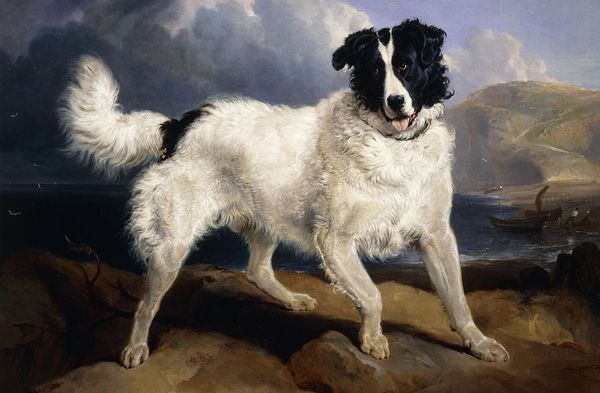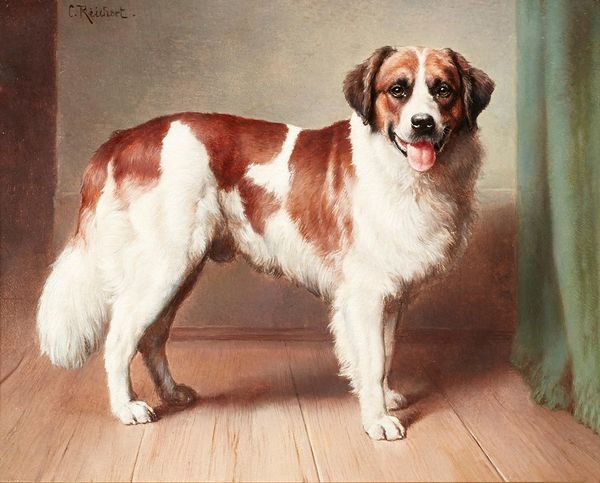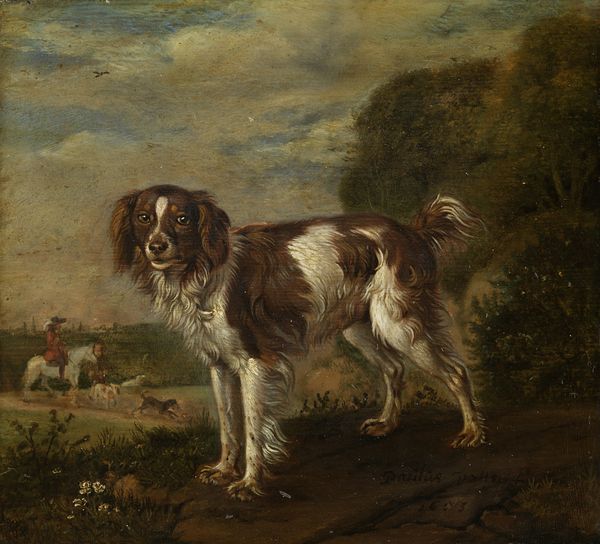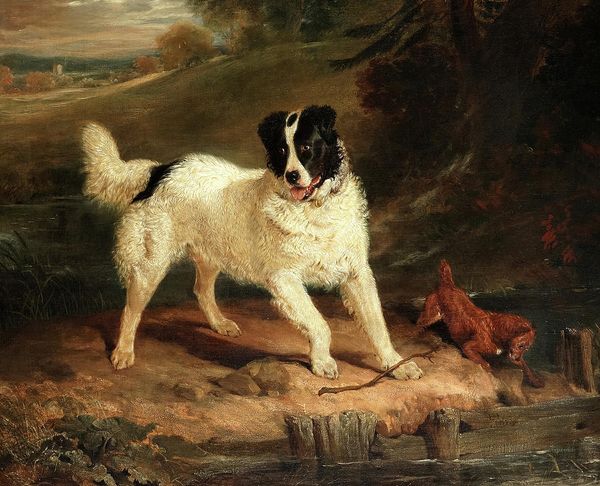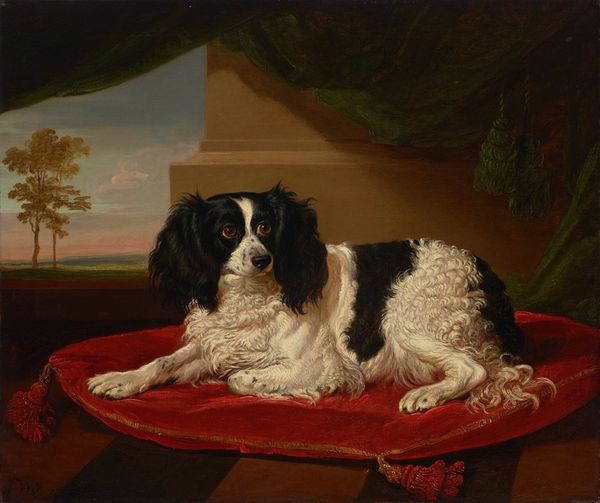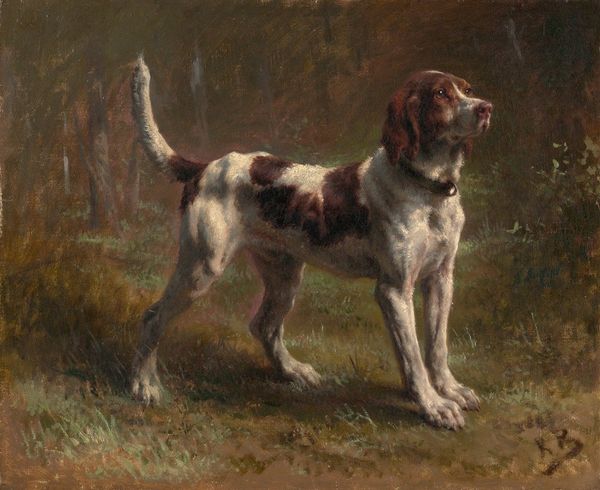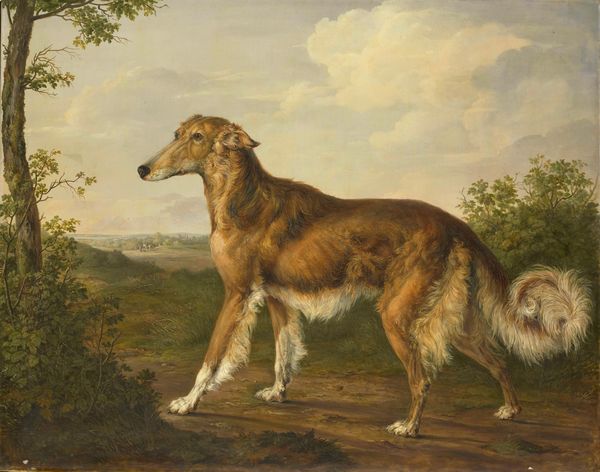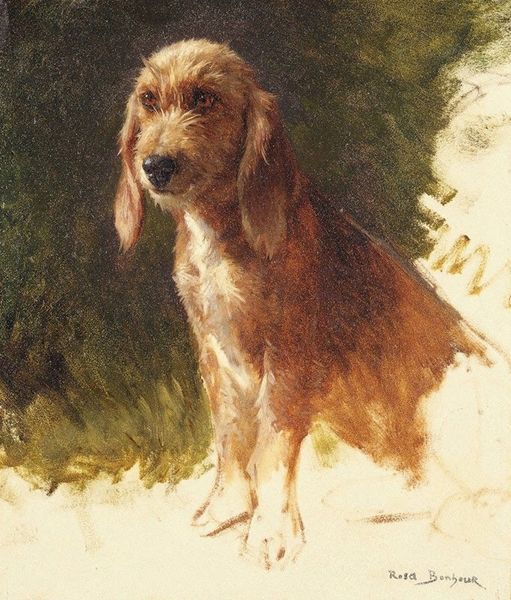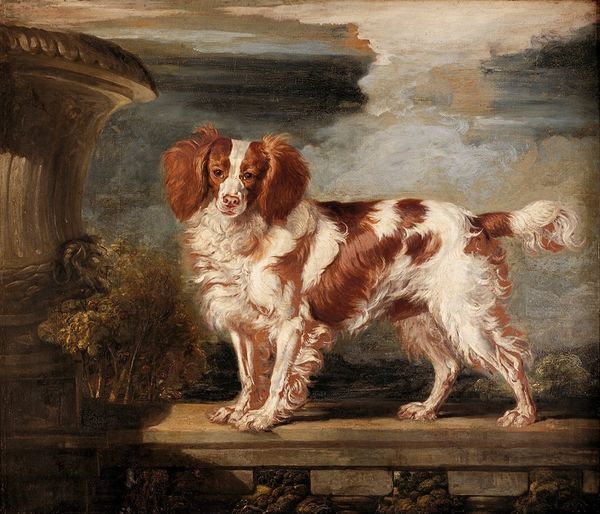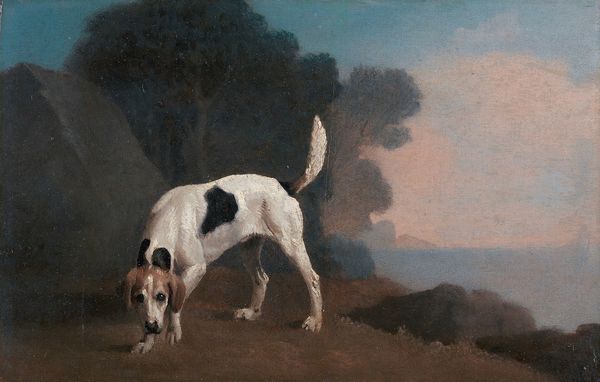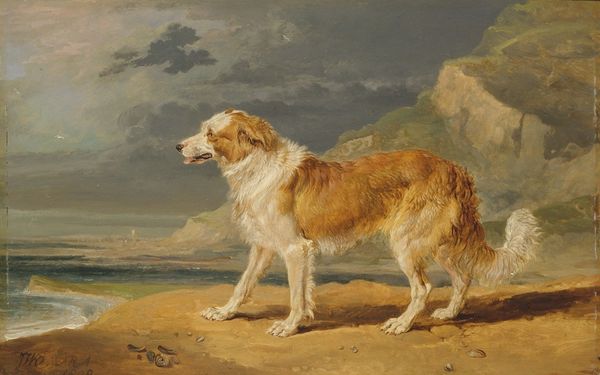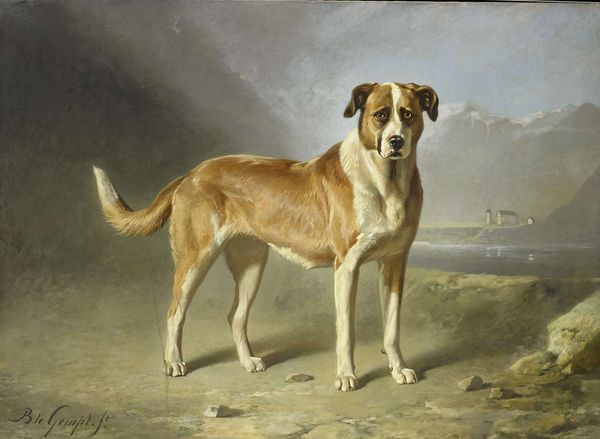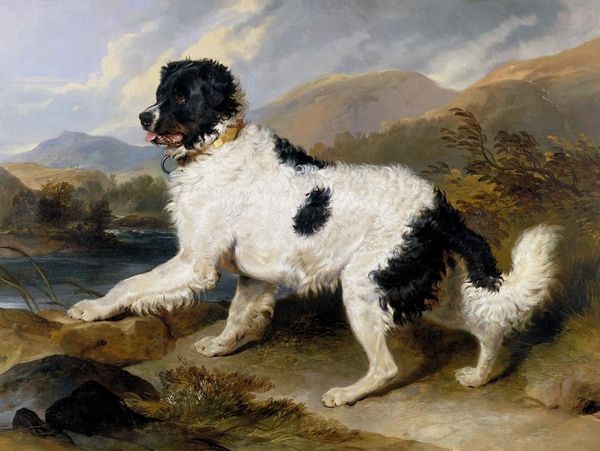
Copyright: Public domain
Editor: So, this is "A Liver and White King Charles Spaniel in a Wooded Landscape," painted in 1776 by George Stubbs, using oil paint. It has such a stillness to it; the dog seems almost regal in this dark, quiet scene. What's your take on it? Curator: That stillness is key, isn't it? Consider the cultural memory attached to spaniels: historically, they were potent symbols of loyalty and aristocracy. But Stubbs places this dog, specifically, in a "wooded landscape." Does the wildness soften or complicate its symbolism, you think? Editor: That’s a really interesting point. I suppose it blurs the lines a little. The dog is clearly domesticated, but the setting implies a connection to something more primal. Curator: Exactly! Think of the oak tree behind it, a classic symbol of strength and endurance, its roots deep within the earth. Then look at the thistle at the dog's feet; though small, it pricks, defends itself. What stories do these details, interwoven with the spaniel's poised demeanor, begin to tell about its cultural importance? Editor: So, it's not just a picture of a dog; it’s a collection of symbols talking to each other, and to us. It sounds like Stubbs is exploring the space between nature and domestication, status and survival? Curator: Precisely! He presents a microcosm of social order within nature, each element imbued with centuries of symbolic weight. Editor: I'll never look at a dog portrait the same way again. Thanks! Curator: My pleasure! Symbolism opens so many doors, doesn't it?
Comments
No comments
Be the first to comment and join the conversation on the ultimate creative platform.

